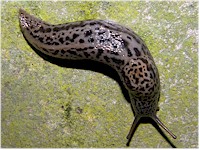Davainea proglottina, also called the minute tapeworm or the small chicken tapeworm, is a parasitic worm that has chicken, turkey, guineafowl, grouse, other domestic and wild gallinaceous birds but also pigeons as final hosts.
It is found worldwide. It is quite common in traditional and free-ranging poultry.
It is closely related to Raillietina spp, another genus of bird tapeworms.

The disease caused by this parasite is called davaineosis.
Davainea proglottina does not affect dogs, cats, cattle, sheep, pigs, horses or other mammals.
Are birds infected with Davainea proglottina contagious for humans?
NO. The reason is that Davainea proglottina is not a human parasite.
You can find additional information in this site on the general biology of parasitic worms and/or tapeworms.
Final location of Davainea proglottina
The predilection site of adult Davainea proglottina is the small intestinen.
Anatomy of Davainea proglottina
Davainea proglottina is a small tapeworm, usually not longer than 4 mm with only 4 to 7 segments (proglottids). The head (scolex) has numerous hammer-shaped hooks and suckers armed with spines, and numerous hooks. The segments are whitish to translucent. Only the last one is gravid, i.e. filled with eggs.
Each segment has its own reproductive organs of both sexes (i.e. they are hermaphroditic). Each segment has also excretory cells known as flame cells (protonephridia). The reproductive organs in each segment have a common opening called the genital pore. In young segments all these organs are still rudimentary. They develop progressively, which increases the size of the segment as it is pushed towards the tail. In Davainea tapeworms only the last segment is gravid, i.e. filled with eggs.
Otherwise, as other tapeworms, they have neither a digestive tube, nor circulatory respiratory systems. They don't need them because each segment absorbs what it needs directly through its tegument.
The eggs measure about 35x50 micrometers, have a capsule and are embryonated, i.e. each one contains a hexacanth larva with hooks.
Life cycle and biology of Davainea proglottina

Davainea proglottina, has an indirect life cycle with certain birds (chicken, turkey, guineafowl, pigeons, etc.) as final hosts, and terrestrial slugs and snails (e.g. of the genus Agriolimax, Arion, Cepaea, Deroceras, Limax, etc.) as intermediate hosts.
The gravid segments of adult tapeworms are shed with the birds' feces (usually one gravid segment per tapeworm per day). The gravid segments are motile and capable of climbing upwards on the vegetation. By mild and humid weather the eggs can remain infective for slugs and snails during several days. The slugs and snails ingest the gravid segments, which release the eggs after digestion.
The eggs then develop to cysticercoids in the body cavity of the intermediate hosts. The birds ingest such contaminated snails or slugs. After digestion, the cysticercoids release the young tapeworms that attach to the gut's wall. The time between infection and shedding of the first eggs (prepatent period) is 2 to 3 weeks.
Harm caused by Davainea proglottina, symptoms and diagnosis
Davainea proglottina is highly pathogenic for young birds. It is very seldom an issue in modern industrial operations. But in numerous regions in Africa and Asia almost all traditionally kept poultry are more or less infected with this parasite or related tapeworms. Free-ranging poultry are more at risk if they have free access to humid environments with abundant slugs and snails that can be inefected.
Davainea proglottina can attach deeply into intestinal villi. Sudden massive infections can cause hemorrhagic enteritis and intestinal necrosis that can be fatal for the young birds. Chronic infections lead to reduced weight gains, diminished egg production, malnutrition, general weakness and even paralysis.
Diagnosis is usually done only after necropsy. It is important to examine a representative sample of the flock and to analyze intestinal smears under the microscope. Gravid segments can be found in the birds' feces, but not always, i.e. there can be false negatives.
Prevention and control of Davainea proglottina
Frequent change of the birds' bedding and keeping it dry can help to avoid infections because it shortens the survival of the eggs and is unattractive for slugs and snails. Free-ranging birds should be kept off humid environments that are supportive of slugs and snails.
Chemical control of the snails and slugs with molluscicides (i.e. snail killers) such as copper sulphate, sodium pentachlorophenate, niclosamide, etc. is not advisable. It is virtually impossible to treat every place where they can survive and they reproduce extremely quickly. Cleaned pastures would become re-infested very fast. In addition it would be also very harmful for the environment. In fact, such molluscicides (mainly niclosamide) are approved only in a few countries as an aid in the prevention of human schistosomiasis (also called bilharziosis or snail fever).
Flocks at risk can be treated with anthelmintics effective against tapeworms. They contain either broad-spectrum benzimidazoles (e.g. albendazole, febantel, fenbendazole, mebendazole, oxfendazole etc.) or specific taenicides (e.g., niclosamide, praziquantel, etc.). Most of these active ingredients are available as additives for feed or drinking water, or as tablets for oral delivery.
WARNING: niclosamide is toxic for geese, and the combination of praziquantelpyrantel tartrate is toxic for chicken!
Other classic livestock anthelmintics such as macrocyclic lactones (e.g. ivermectin, doramectin, moxidectin, etc.), levamisole, tetrahydropyrimidines (e.g. pyrantel, morantel) and piperazine derivatives are not effective at all against Davainea proglottina or whatever tapeworm.
There are so far no vaccines against Davainea proglottina. To learn more about vaccines against parasites of livestock and pets click here.
Biological control of Davainea proglottina (i.e. using its natural enemies) is so far not feasible.
You may be interested in an article in this site on medicinal plants against external and internal parasites.
Resistance of Davainea proglottina to anthelmintics
So far there are no reports on resistance of Davainea proglottina tapeworms to anthelmintics.
This means that if an anthelmintic fails to achieve the expected efficacy, chance is very high that either the product was unsuited for the control of Davainea proglottina tapeworms, or it was used incorrectly.
|
Ask your veterinary doctor! If available, follow more specific national or regional recommendations for Davainea control. |